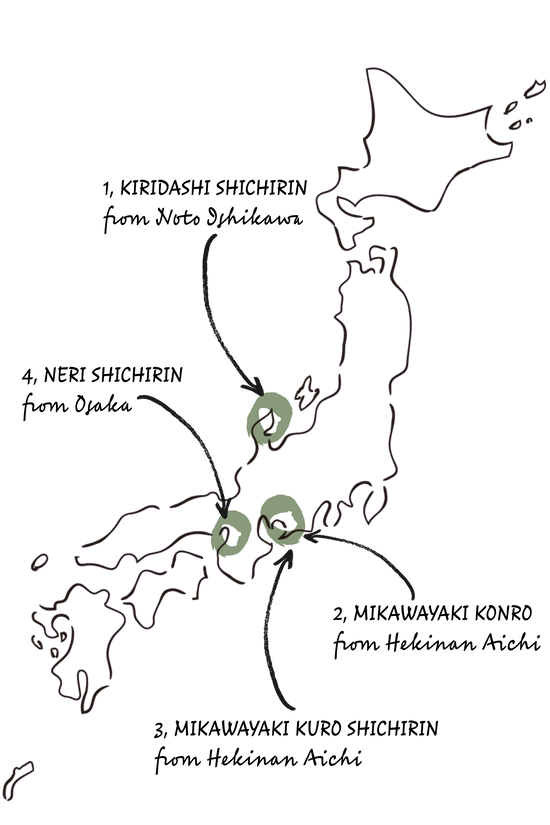Shirin from All Over Japan
JAPANESE TRADITIONAL BARBECUE GRILL
A common question we often get from our International Customers is: What is the difference between a Shichirin, a Hibachi, and a Konro?
A Hibachi is an iron kettle, used either to boil water or as a small, in-Home heater. Shichirin and Konro both refer to cooking stoves; and in some places in Japan the two words are used interchangeably. But, generally speaking, Konro refers to stoves that cannot be carried around, whereas Shichirin are portable.Here we introduce the various types of shichirin rings that Komon handles in Japan.

WHY TOP CHEF CHOSE SHICHIRIN ALL OVER THE WORLD?
Shichirin is also used and recognized by many Japanese restaurants such as Yakitori and Sushi, as well as other contemporary restaurants.
This is because of Shichirin's ability to bring out the "Umami" of the ingredients.
When cooking on a Shichirin, charcoal is used as fuel. Charcoal emits infrared rays, and the high-temperature heat of the infrared rays allows the food to be crispy on the outside and juicy on the inside with a high moisture content.
Shichirin is made of diatomaceous earth, which provides excellent heat insulation and fire resistance. Shichirin is usually made of diatomaceous earth and has excellent heat insulation and fire resistance, so the heat from the charcoal is not lost to the outside, allowing you to cook at maximum heat.
SHICHIRIN MAP IN JAPAN

1, KIRIDASHI SHICHIRIN
Kiridashi Shichirin is made using a traditional technique that has been used since the 1600s to cut blocks of diatomaceous earth into the shape of a shichirin. Noto in Ishikawa Prefecture is one of the best places in the world to mine high quality clay.

2, MIKAWAYAKI KONRO
Originally derived from the Mikawayaki Kuro Shichirin, it is now a modern shichirin that pursues ease of use and design. Various colors and shapes are recommended for those who are particular about appearance.

3, MIKAWAYAKI KURO SHICHIRIN
This double-layered Shichirin uses local Mikawayaki clay, which is very durable, on the outside and clay from Ishikawa Prefecture, which is very fire-resistant, on the inside. Today, only one craftsman in the world is able to make this very rare item.

4, NERI SHICHIRIN
The most common type of Shichirin, formed by crushing fine diatomaceous earth and pressing it into a mold. The round shaped Shichirin is the most used and familiar in Japan.



